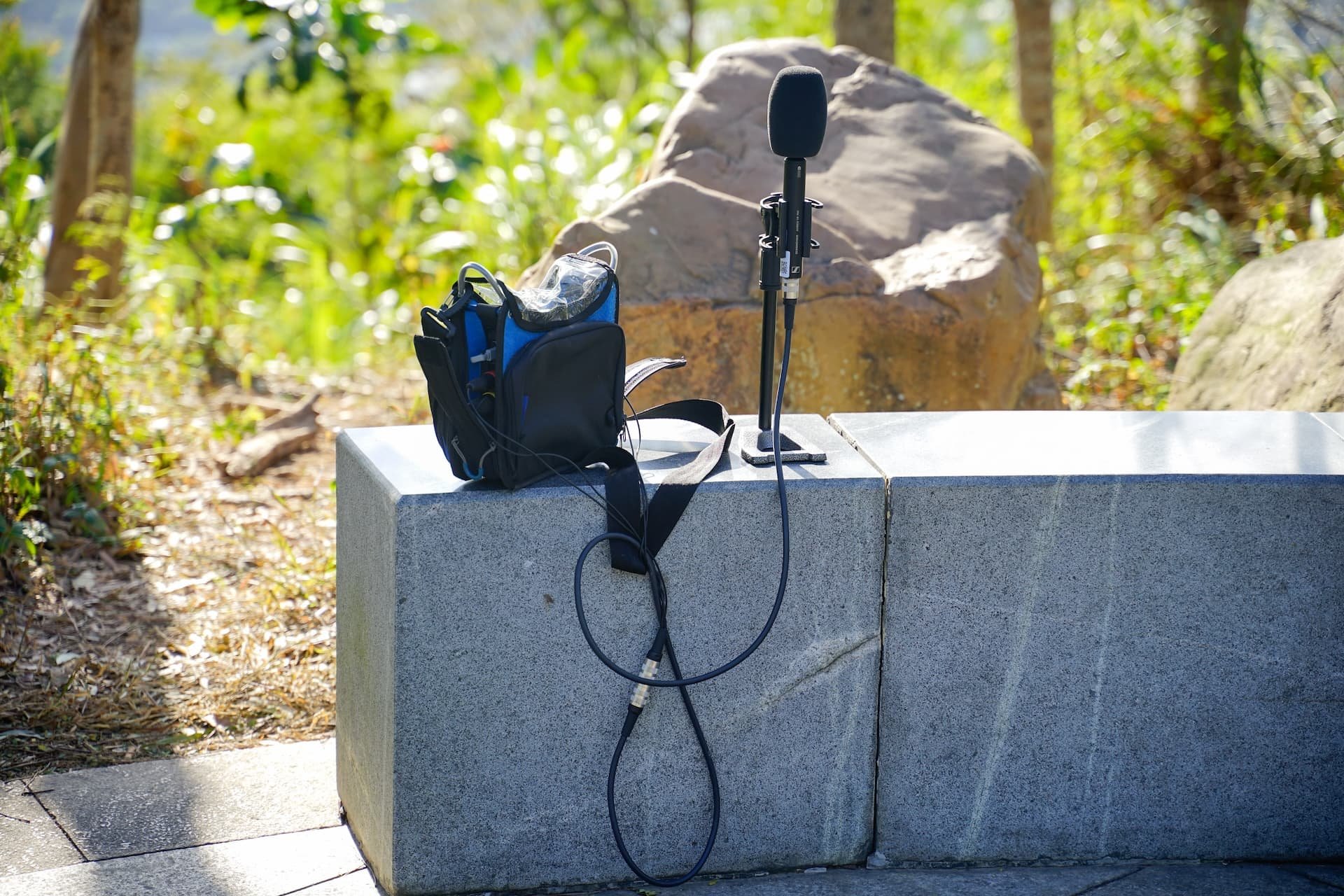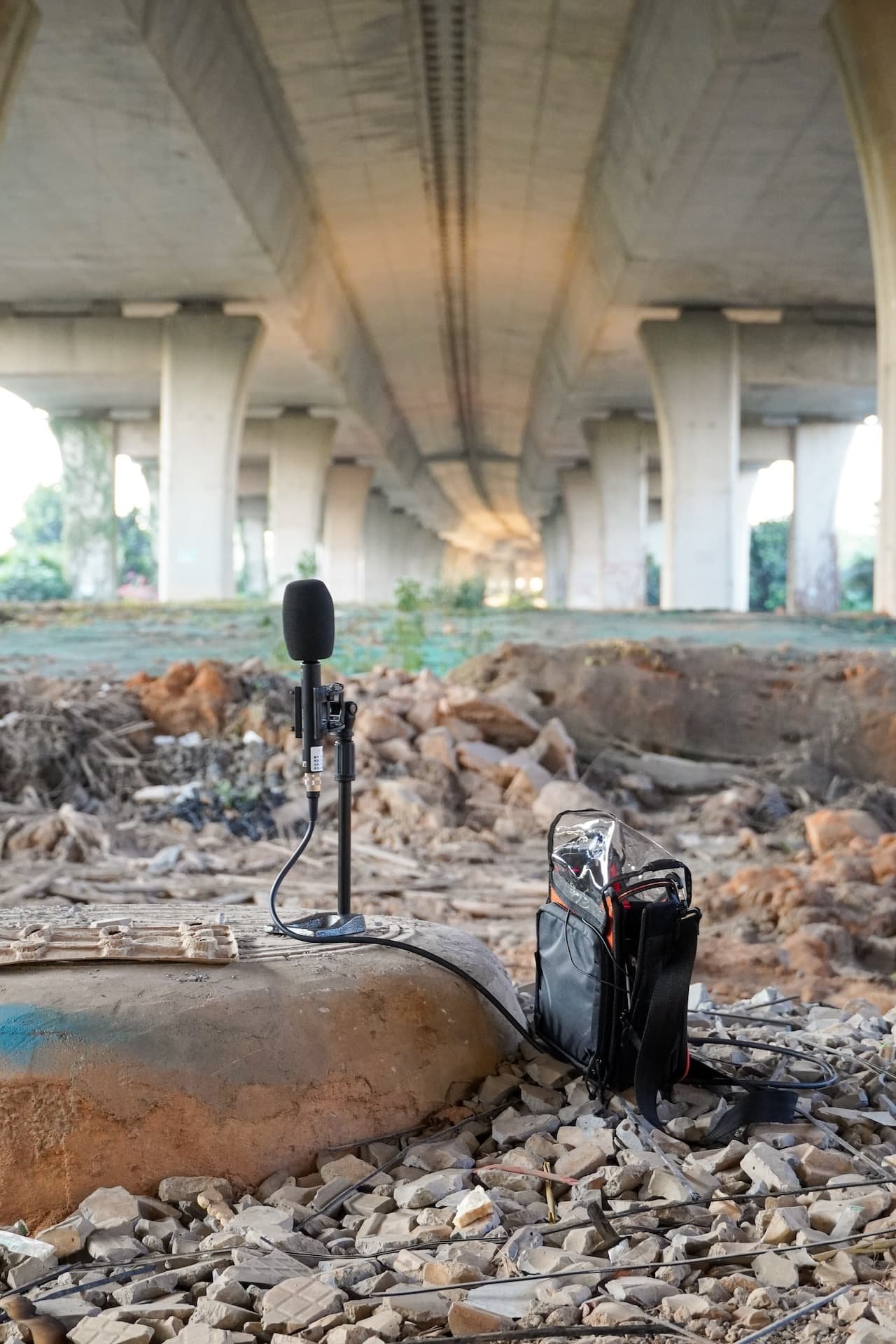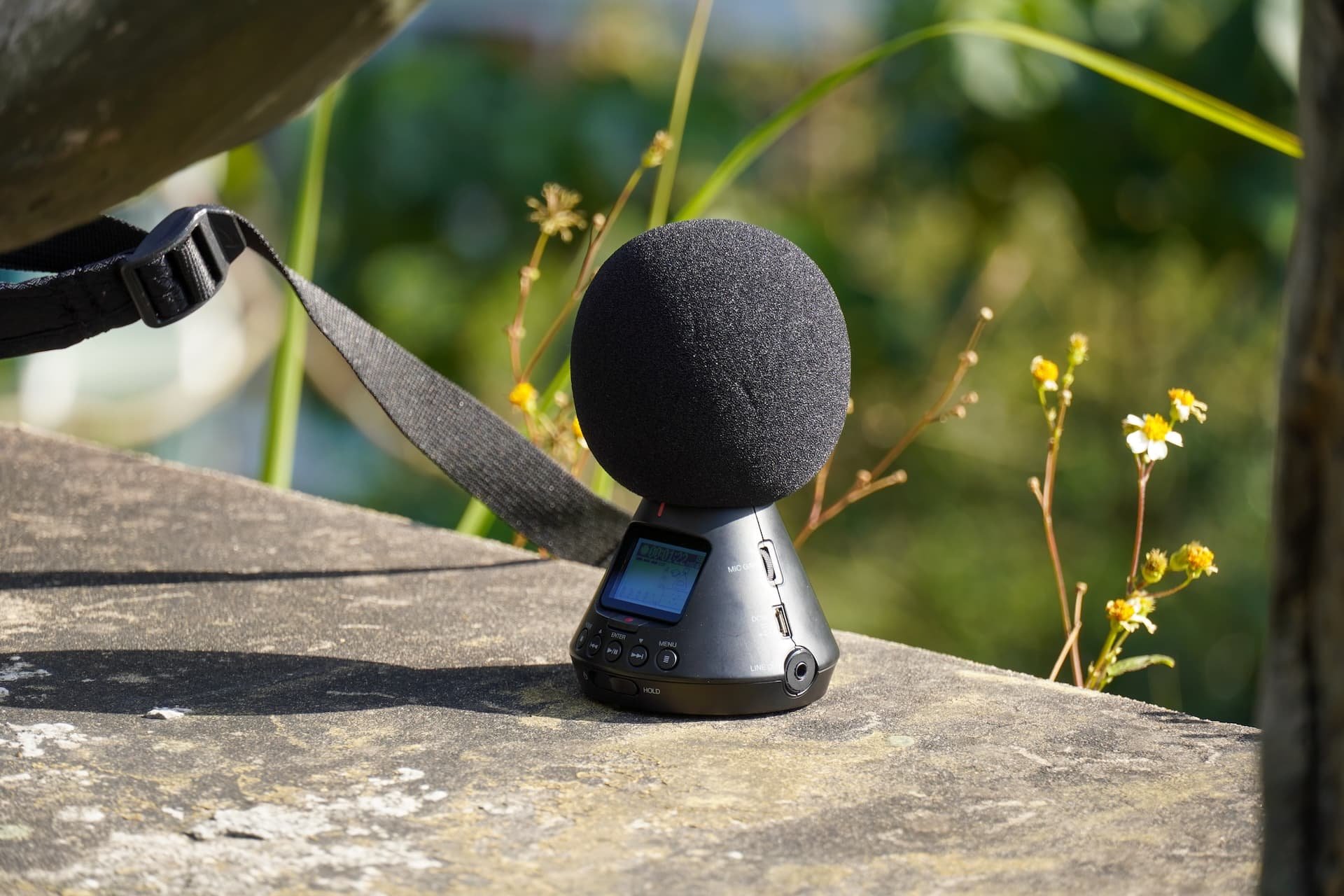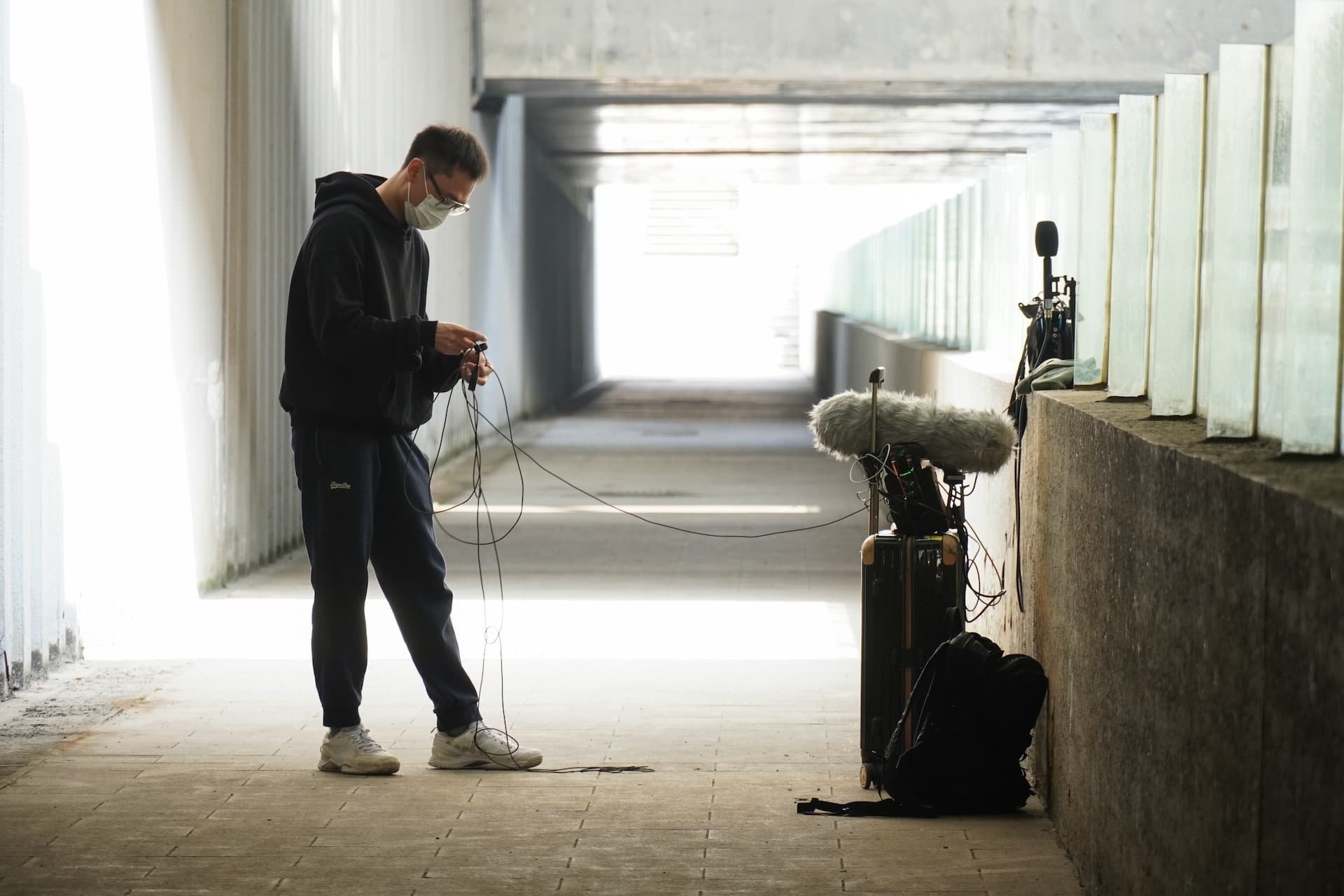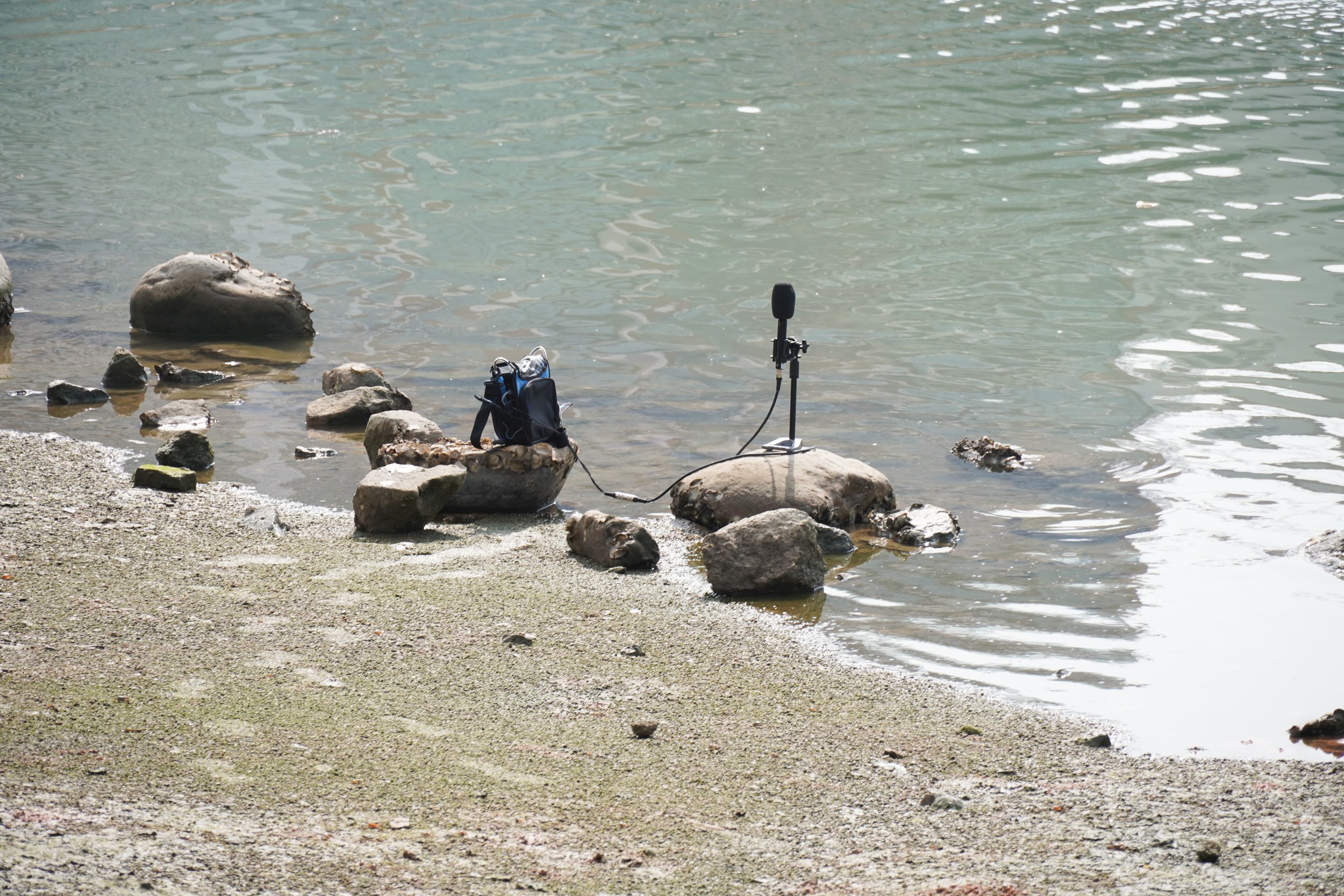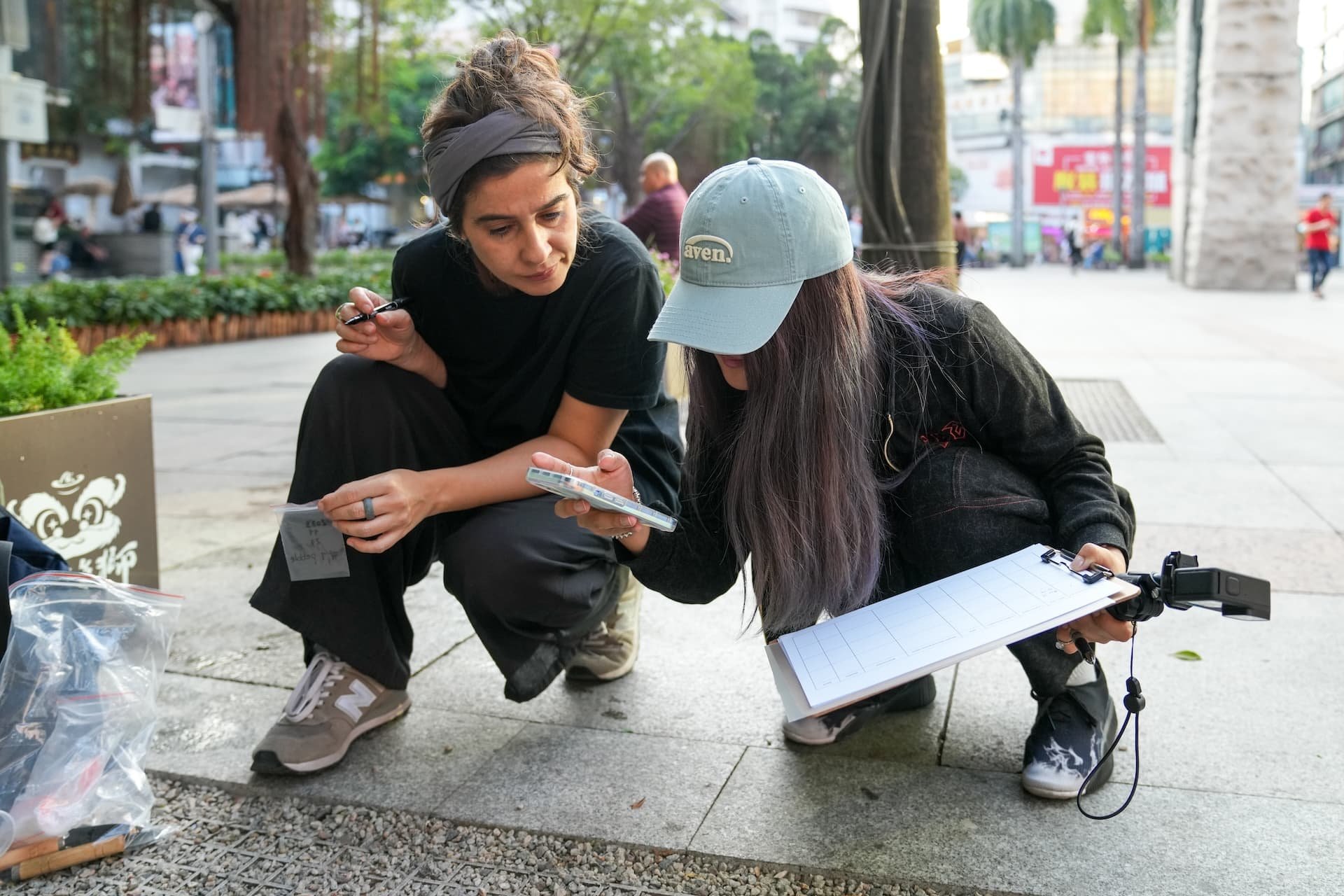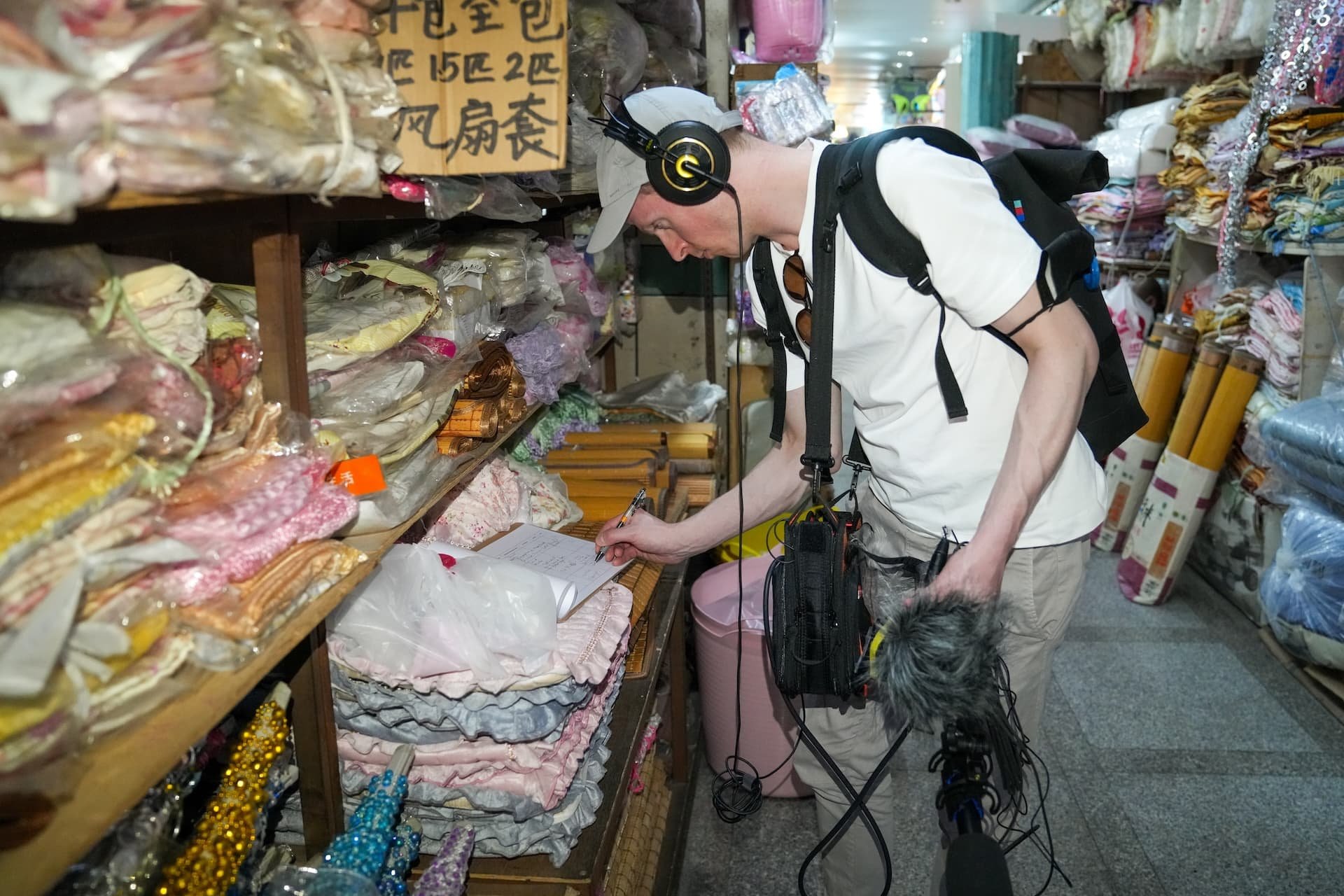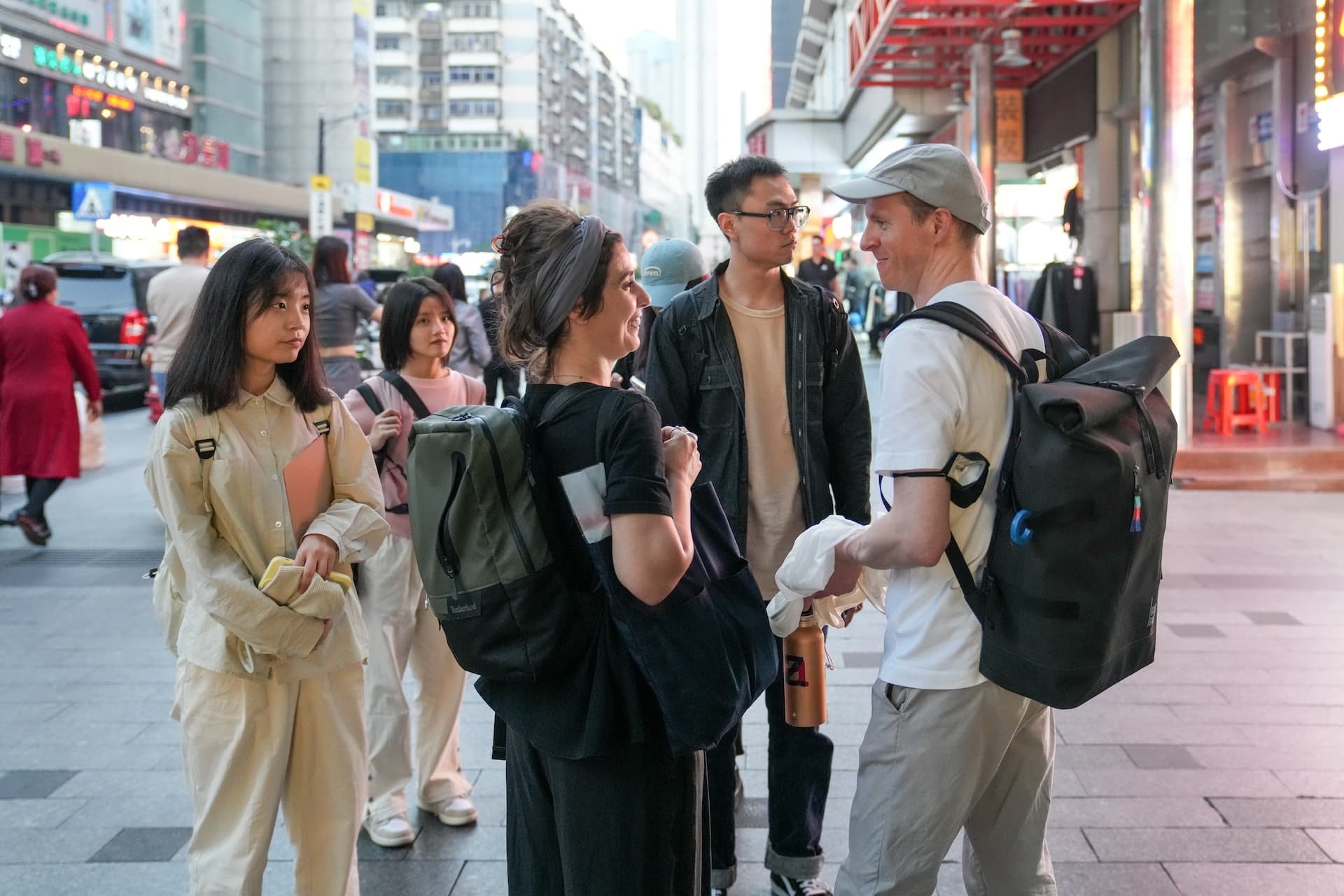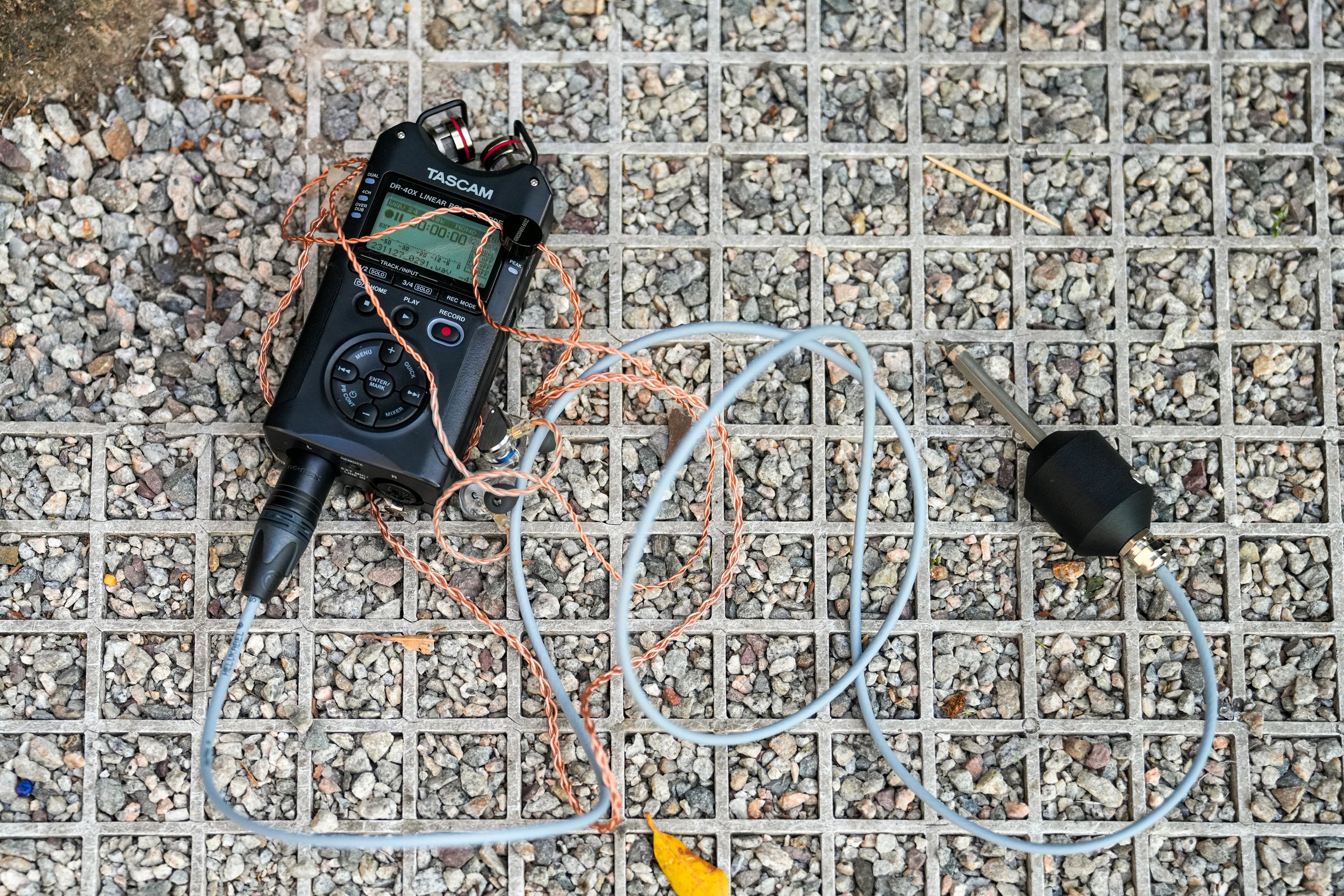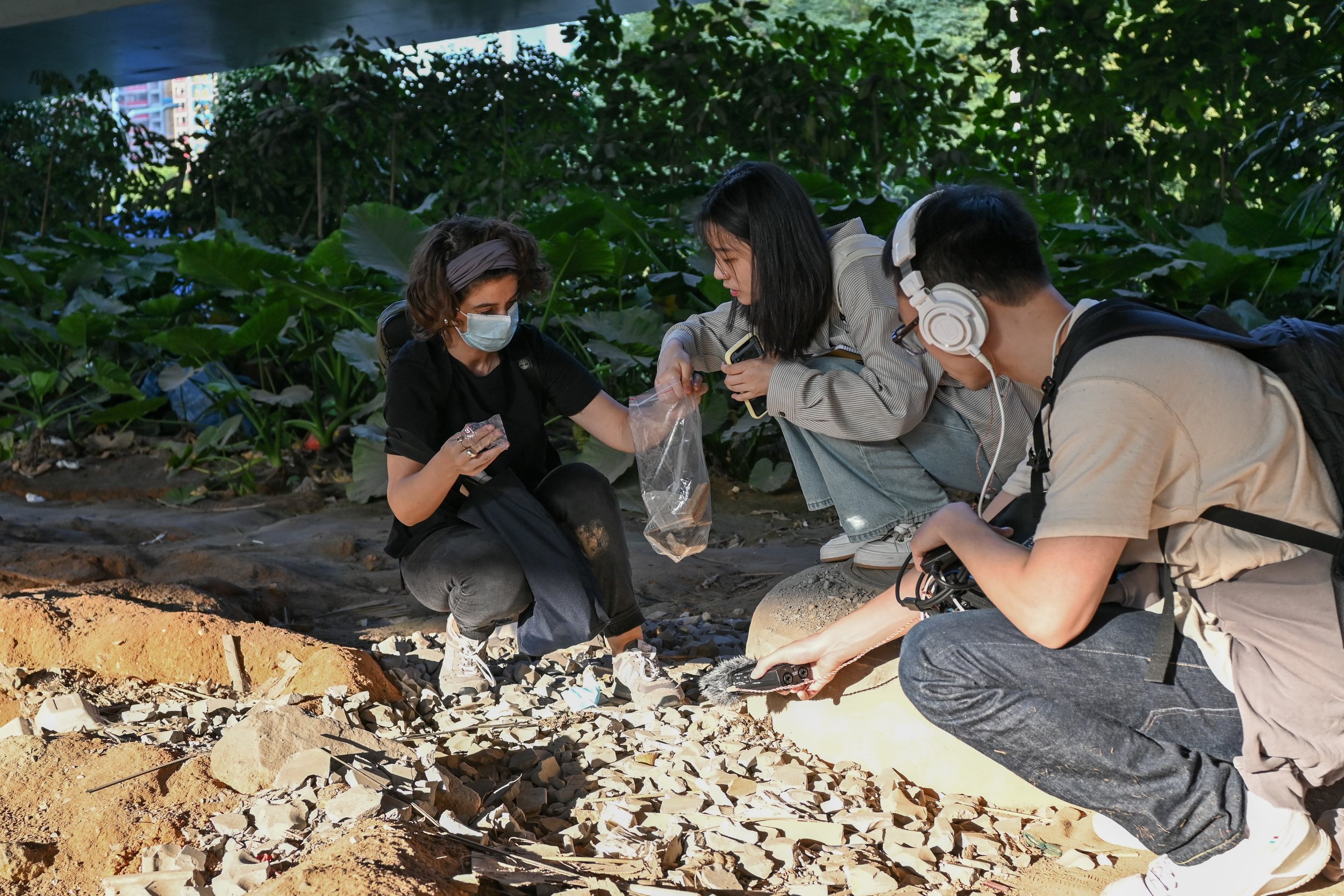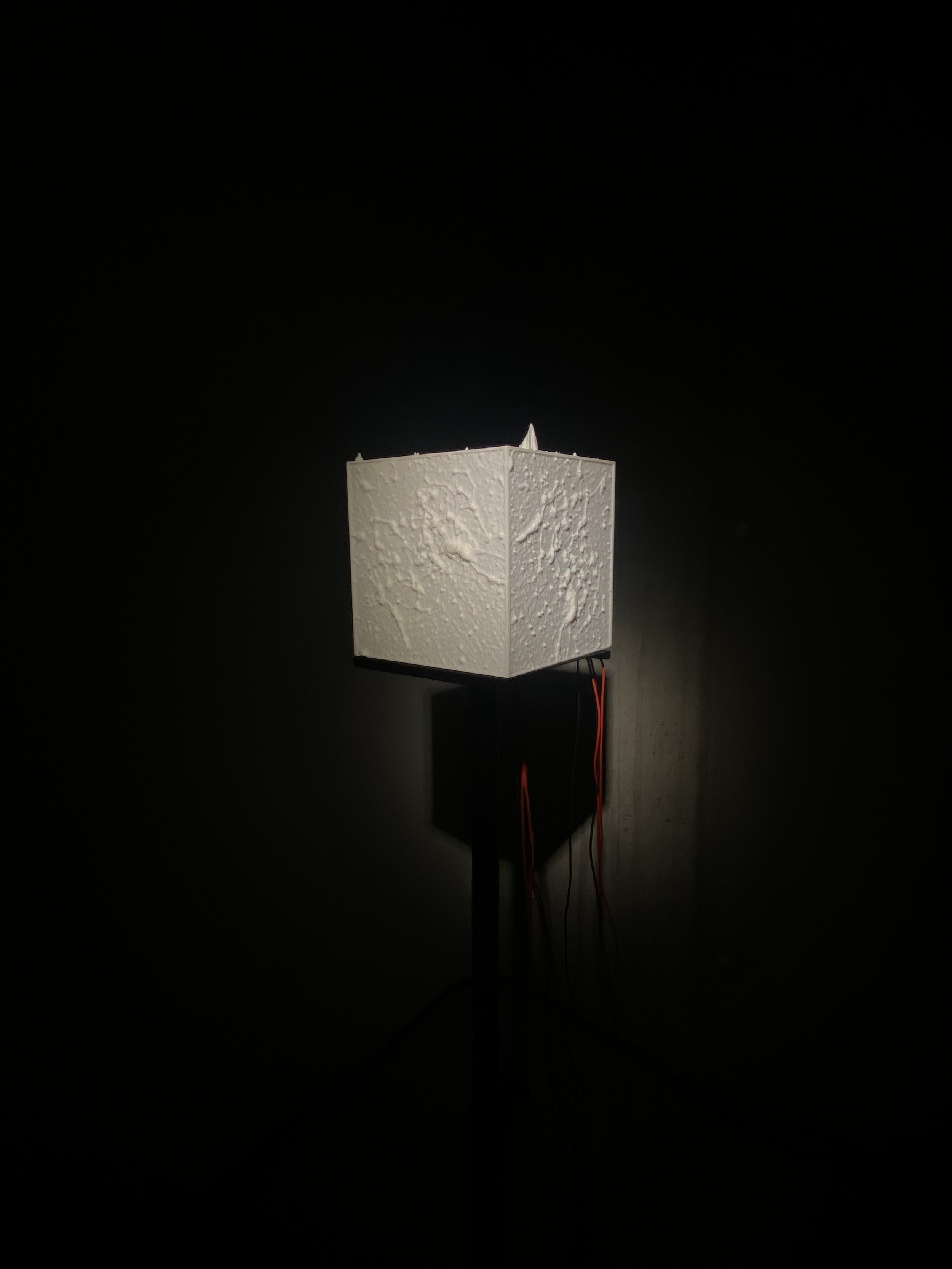A Grain Of
Enza Migliore, Marcel Sagesser, Hanyu Qu, Yiyuan Bai, Zhonghui Tang, Minghim Tong, Peihua Huang
“A Grain of” is an art installation: a small cube (25 x 25 x 25cm) of custom-made matter, sitting on a plinth, emitting sound from within. Its underlying idea is to take a “grain” from a dense, contemporary urban space and translate it into an art installation that makes the city experienceable for the audience. This small cube holds some of the material and sonic ecology of the city from which it stems embedded in it. Together with this installation, the published research paper “A Grain of – A Multimodal Representation of the City’s Ecology Through Material and Sound” expands on the topic. In the paper, the authors describe the technical processes that they have used to sample and reinterpret the city’s material and sonic ecologies, including Atomic Force Microscopy (AFM), 3d printing, field recording, and sound synthesis. They offer some theoretical notes towards the grain of the city in order to investigate how this process of technical translation produces an experience with affective, poetic, and speculative potential. They argue that this experience lets its audience critically rethink the old enduring binaries between natural and artificial or between the city and nature.
Download the paper here
A Grain Of
Designing for Shenzhen’s Techno-Natural Futures
Designing for Techno-Natural Futures: Rendering Shenzhen’s Urban Materialities from Inside a “Grain”
Team leaders:
Enza Migliore, Assistant Professor
Marcel Sagesser, Assistant Professor
Research Team Members:
Yiyuan Bai, Zhaorui Liu, Zhonghui Tang, Simeng Wang, Yaohan Zhang, Bo Dong, Peihua Huang, Yujing Ma, Zichun Xia, Zhiyi Zhang
Shenzhen, 2024
“A Grain Of” is an ongoing technology-driven research project that aims to read and sense emerging urban environments through their materiality, on the example of Shenzhen. The complexity of the city is rendered through the physical hybridization and the conceptual manipulation of data collected over eight weeks of extensive fieldwork.The present exhibition creates a multimedi immersive experience strictly based on Shenzhen’s data, thereby building knowledge that will help us develop future cities.
The research team first conducted desk research on geographical, economic, and social dynamics to select three locations as data sources: Dongmen, a vibrant commercial area in the older part of the city; Wutong Mountain, one of the city’s urban forests; and Qianhai, the newest and largest construction area. Four sites were identified within each location, where nature, humans, and technology intersect. Data collection consisted of 1) solid, 2) liquid, and 3) digital materials.
They have been taken from natural and built systems, specifically 1) soil, stones, woods from every location, and shells from the site close to the sea; 2) water from every sites; and 3) audio data from the same systems on-site, and digital data of logs and built elements, such as fences, entire shops, and concrete walls. Different methods and technologies were used for sampling and archiving, such as 1) hand collection of solid natural materials stored in sealed bags, 2) pipette collection of water stored in sealed rigid containers in the fridge, 3) audio data through shot-gun microphone, surface vibration contact microphone, 360 spatial audio recording, surface vibration contact microphone, underwater hydrophone recording, and big systems data via 3d scan. After 8 weeks of extensive fieldwork, the sample collection was systematized in the lab, where data analysis and experimental interpretation through different digital sound, modeling, and manufacturing technologies were undertaken. All material samples have been digitized, re-meshed, and remodeled using audio data (obtained through sound visualization) as texture. In addition, using an AI-assisted algorithm, audio and video data have been screened for traces of human activity. The mixed-method, interdisciplinary research approach provides insight in how human, industrial, technological, and natural forces inform each piece of material in a city like Shenzhen.
This present exhibit, titled “A Grain Of,” brings the audience into a grain of the city and renders it sensible through a multisensorial experience on both micro and macro scales. Thereby, the invisible, inaudible, and unnoticeable is augmented into a fictional display of the city’s granularity that is strictly based on the database collected from Shenzhen.
What is the future of our built environment?
As the earliest to approach reform and open-up policy, Shenzhen has been the benchmark and model of urban planning and development for many other cities. In its unprecedented, fast-paced growth, the environment has been artificially altered in its physical, geographical, and ecological features. The sea, the river, the mountains, the forests, the farmland, etc., have changed dramatically over the past 40 years. Beyond these macro changes, distinguishable to the naked eye, the microscopic nature of the city has changed too, along with our perception and understanding of it.
How do we capture these subtle transformations?
“A Grain Of” explores apparently unrelated visible and invisible elements of the city through sound and materials to design micro experiences based on influences, alterations, and relations between different material types – read as data – to render the urban ecology and learn from it for developing our future cities.
